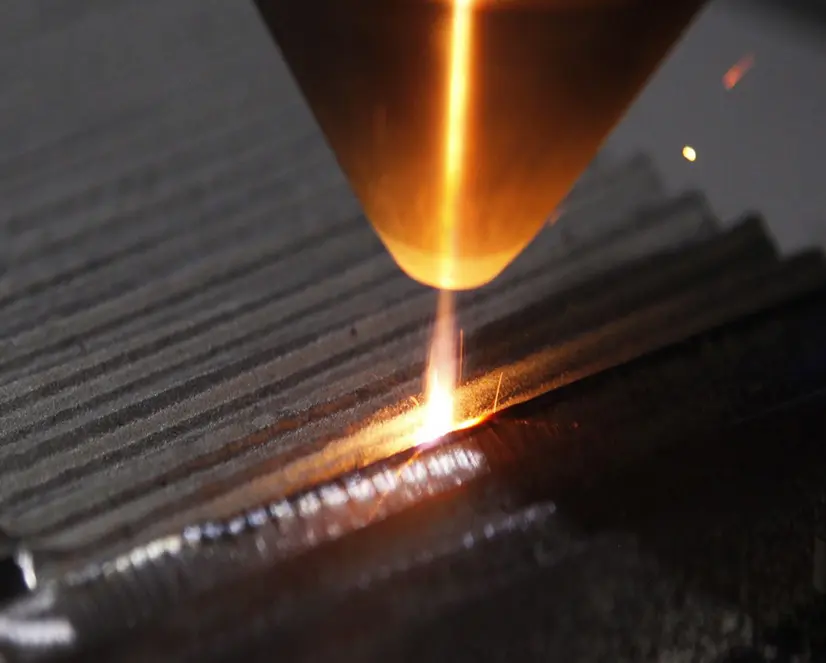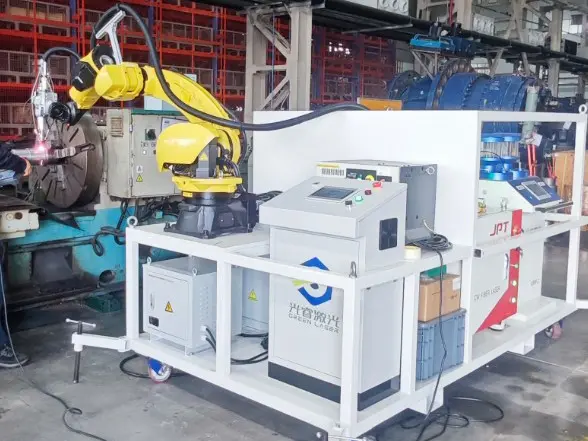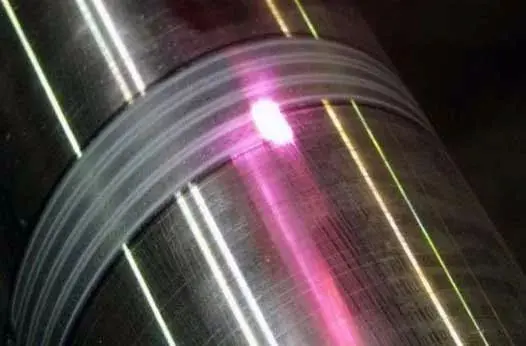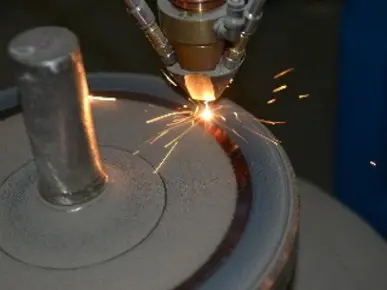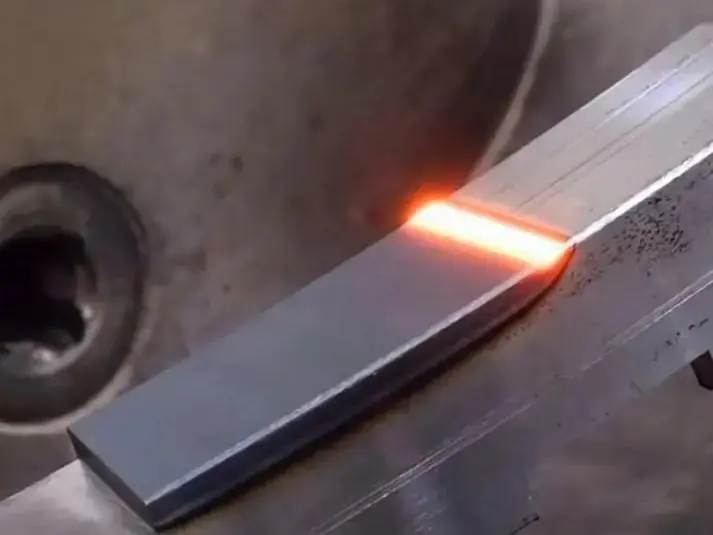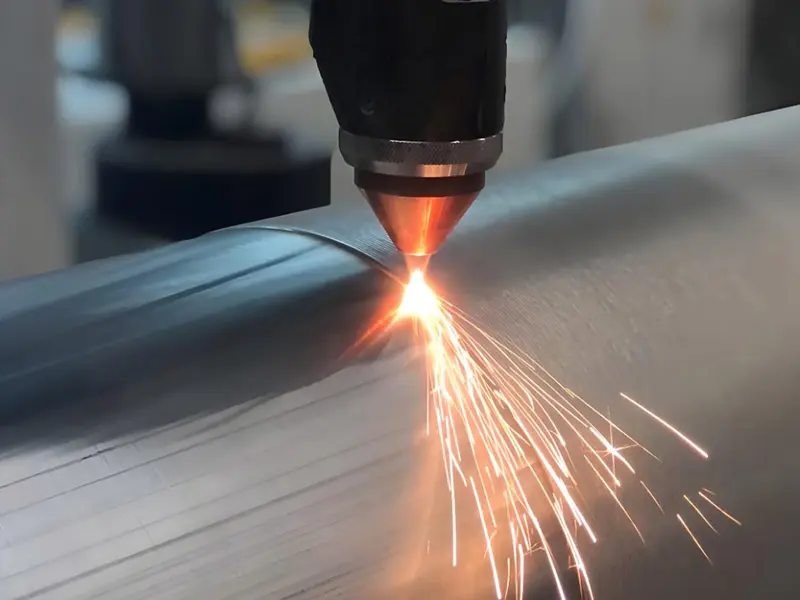The difference between iron-based powder and nickel-based powder for laser cladding
In the laser cladding of cast iron parts, the choice of iron-based powder and nickel-based powder directly affects the performance, application scenarios and cost of the cladding layer. The core difference between the two is reflected in the composition, performance, process adaptability and application scenarios, as follows:
1. Differences in ingredients
|
Powder Type |
Main Ingredients |
Typical alloying elements |
|
Iron-based powder |
Based on Fe (content usually > 50%) |
Often contains Cr, Ni, Mo, Si, B, etc. (such as Fe-Cr-Ni-Mo system, Fe-Si-B system) |
|
Nickel-based powder |
Based on Ni (content usually > 50%) |
Often contains Cr, Mo, W, Co, Si, B, etc. (such as Ni-Cr-Mo system, Ni-Cr-B-Si system) |
2. Core Performance Comparison
1) Mechanical properties
Iron-based powder:
• High hardness (HRC 30-60, with composition adjustment, high Cr, Mo type can reach HRC 50 or above), good wear resistance;
• Strength is close to that of cast iron matrix (tensile strength 500-1000MPa), better metallurgical compatibility with cast iron, and the bonding strength between the cladding layer and the matrix is high (usually >300MPa);
• Medium brittleness, high hardness models may have certain crack sensitivity (the cladding process needs to be controlled to reduce stress).
Nickel-based powder:
• Medium hardness (HRC 20-45, low alloy type is softer, high Cr, W type can reach HRC 40-50), but excellent toughness, better impact resistance than iron-based powder;
• Slightly lower tensile strength than high alloy iron-based powder (400-800MPa), but better plasticity (elongation>10%, iron-based powder is usually <5%);
• Slightly lower bonding strength with cast iron (usually 200-300MPa), but low crack sensitivity, not easy to produce cold cracks (due to the toughness and low stress characteristics of nickel).
2) Corrosion resistance
Iron-based powder: medium corrosion resistance. Ordinary iron-based powder (low Cr) has good resistance to atmospheric and freshwater corrosion, but is prone to rust in acidic and alkaline environments. High Cr type (Cr content > 12%) has improved corrosion resistance, but still not as good as nickel-based powder.
Nickel-based powder: excellent corrosion resistance, especially in high temperature, humid, acidic and alkaline (such as organic acid, weak alkali) environments (because Ni and Cr form a dense oxide film), suitable for corrosive conditions.
3) Heat resistance
Iron-based powder: general heat resistance, long-term working temperature is usually <500℃ (easy to oxidize and strength decreases at high temperature).
Nickel-based powder: strong heat resistance, can work stably in high temperature environment of 600-1000℃ (such as nickel-based powder containing Cr and W elements, excellent anti-oxidation and thermal fatigue resistance).
4) Compatibility with cast iron matrix
Iron-based powder: closer to the thermal expansion coefficient of cast iron (Fe-based) (iron-based powder is about 11-14×10⁻⁶/℃, cast iron is about 10-12×10⁻⁶/℃), small thermal stress during cladding, not easy to crack due to thermal expansion difference (especially suitable for thick cladding layer).
Nickel-based powder: The thermal expansion coefficient is relatively high (about 13-16×10⁻⁶/℃), which is slightly different from cast iron. It is easy to crack due to thermal stress during thick cladding, which needs to be alleviated by preheating, slow cooling or layered cladding.
3. Differences in process adaptability
Iron-based powder:
• Low sensitivity to laser power, medium fluidity of molten pool, easy to form a flat cladding layer;
• Contains deoxidizing elements such as Si and B, has a high tolerance to impurities such as C and S in cast iron (not easy to produce pores);
• The dilution rate of the cladding layer (the proportion of base metal mixed into the cladding layer) is moderately difficult to control, usually controlled at 10%-20% (too high may reduce hardness).
Nickel-based powder:
• High laser absorption rate, good molten pool fluidity (especially nickel-based powder containing B and Si), easy to achieve thin and uniform cladding layer;
• Sensitive to C in cast iron. If the matrix has a high carbon content (such as gray cast iron), it is easy to form brittle phases (such as network carbides) due to the diffusion of C into the cladding layer. It is necessary to strictly control the laser parameters (such as reducing power and increasing scanning speed) to reduce the dilution rate (usually required to be less than 10%);
• Easy to react with sulfur (S) in cast iron to form low-melting eutectic (such as Ni₃S₂), resulting in thermal cracks. It is necessary to ensure that the surface sulfides are removed during the pretreatment of cast iron parts.
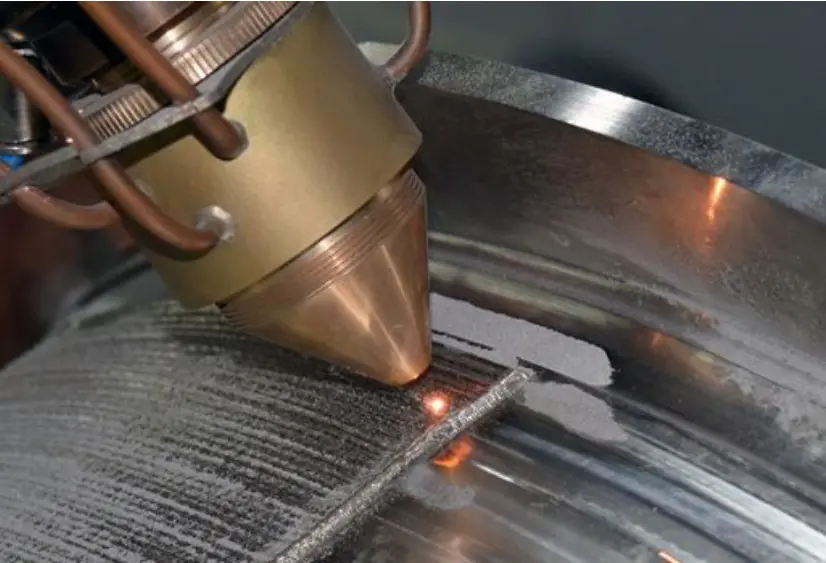
4. Cost and application scenarios
|
Dimensions |
Iron-based powder |
Nickel-based powder |
|
Cost |
Lower (about 1/3-1/2 of nickel-based powder), cost-effective |
High (due to the high price of Ni metal), high cost pressure |
|
Applicable scenarios |
1. Working conditions requiring high wear resistance and medium corrosion resistance (such as machine tool guide rails and roller repair); 2. Low-cost, large-volume dimensional restoration or surface strengthening of cast iron parts; 3. Requirements for thick cladding layers (>2mm) (such as wear repair of large cast iron parts). |
1. Working conditions requiring high corrosion resistance and heat resistance (such as chemical equipment, high-temperature valves); 2. Scenarios requiring excellent toughness and impact resistance (such as gear tooth surfaces, crusher hammers); 3. Precision cladding of thin-walled or complex-shaped cast iron parts (such as molds, hydraulic parts). |
Summary
• Iron-based powder is preferred: when low cost and high wear resistance are pursued, and the working conditions do not require strong corrosion or high temperature (such as repairing ordinary mechanical parts).
• Nickel-based powder is preferred: when corrosion resistance, heat resistance or high toughness are required, and higher costs are acceptable (such as strengthening precision cast iron parts under special working conditions).
